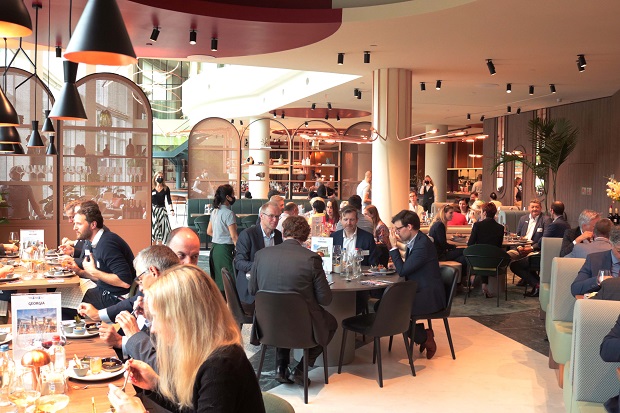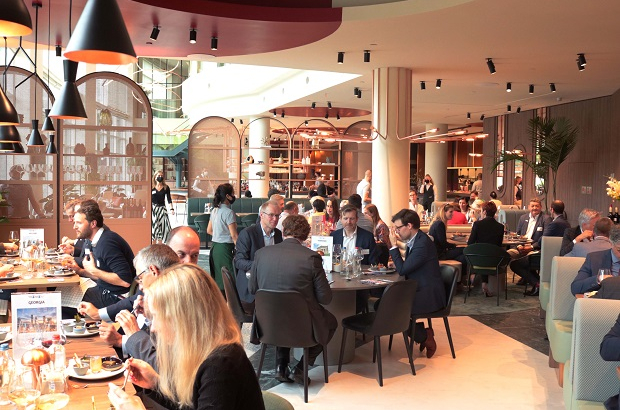- Daily & Weekly newsletters
- Buy & download The Bulletin
- Comment on our articles
Networking on the net has been put to the ultimate test over the last 18 months, but does it work?
The pandemic has left many lasting impacts, and one of them is the use of video technology to get our jobs done. Whether it’s a one-on-one chat with your boss or an AGM of 50 people, the learning curve in accessing and taking advantage of online meeting and conference solutions has been sharp. It has also been successful for the platforms, with Zoom now a household name.
But when it comes to networking, do these platforms fall short? The entire concept of networking is about getting together in person, mingling, meeting new contacts, exchanging ideas and business cards. While a simple meeting with colleagues might not be impaired by computer screens, professional socialising with strangers has surely been hampered.
In fact, it turns out to be more complicated than that. While some professionals can’t wait to get back to face-to-face networking, others have found that these inventive platforms offer them advantages over in-person events.

“From what I’ve seen, it’s been easier for some people to network online,” says Amanda Newell, a board member at Professional Women International (PWI). Newell, a financial planner by day, is the leader of PWI’s Women and Money programme and regularly leads workshops on the topic. “I’ve heard from some women that, when they’re in a big room with a lot of women, it’s daunting. It can be quite challenging to walk into a space where you don’t know anybody. You might attach yourself to one person and not move around the room. This isn’t the same for everyone, of course, but for a lot of people it is.”
When bigger groups of people on a video platform move to breakout rooms, she adds, they are essentially forced to speak to each other. There are few enough people – four or five, say – to be able to have a conversation. Rather than attaching yourself to one person in a real-life event, you are automatically attached to several. The more opportunities for breakout rooms, the more people everyone meets.
PWI, which brings international, English-speaking women together to share ideas and knowledge on a professional and personal level, had not held a single event online before the pandemic. But they made the most of the opportunity – and plan to continue with online events in the future. What they found was that choosing the right option on the right platform was crucial.
“If you’ve got 100 people on the screen in one place, how can you network? You can’t,” Newell says. “If it’s smaller, then it’s quite easy to chat. You move around, it’s almost like speed networking.”
That’s exactly the event that the American Chamber of Commerce (AmCham) held to improve online networking. Finding that letting people loose to network on their own didn’t work the same way it did in real life, it hosted a networking challenge.

“We matched people randomly for 20 minutes, and they had to find out information about the other person,” says Manuela Mio, events co-ordinator at AmCham. “They had some questions to guide them. It was a kind of competition, mixed with networking.” Like PWI, AmCham found that purely networking online was difficult. “It feels a bit awkward, like you’re randomly meeting someone,” says Mio. “So we gave some kind of structure to it, like a game. Then it was easier for people to break the ice.”
That was one way, and organisations found other methods of getting businesspeople together in a way that felt natural. Newell is also active with the British Chamber of Commerce (BritCham) and found that the platform Airmeet, which specifically targets communities and enterprises, worked well for them. A BritCham event that introduces newcomers to their committees is normally held in person, but they found that it was quite easily done through the platform.
“On Airmeet, you can join tables in specific rooms. I’m on the sustainability committee, so I met people there.” There was also a table for digital interests, for doing business in Brussels and many other topics. “Visitors could join those tables, but they could also walk around the site virtually and network one-to-one. They could go from room to room, table to table, jump in and out. It’s a lot more efficient actually.”
AmCham, meanwhile, went with the platform HopIn, which combines presentations with the ability to hook up with other participants. They were responding to a request from their members, who appreciated presentations online but missed the networking component. Daniel Pyster, senior director of AmCham, says this actually pointed out the weaknesses of digital networking.
“Digital applications are very, very useful for presenting content,” he says. “But we heard throughout the past year from our members that they missed the networking. So we found the HopIn platform, which integrated that, so you had the option of the stage in one area, and then the networking elsewhere. But the truth is, people didn’t use the networking component of it very much. So they asked for it, but when it was available, they didn’t take advantage of it.”
Digital networking, it seems, requires a very specific push from the organisation. “The whole thing depends on a few factors,” says Newell. “The kind of event, how it is organised, who is taking part.” What both organisations emphasise is that it took time and effort to get it right. So businesses and associations shouldn’t worry if something doesn’t work out; they should just try something else. “Like with every organisation, it was experimentation,” says Pyster. “We didn’t have much experience with digital events, so we tried all kinds of formats. It was really a learning process for all of us.”
They all agree that using online platforms has changed the way international business thinks of presentations. “PWI was able to host speakers from the UK, Australia, Cyprus,” says Newell. “That wouldn’t have been the case face to face. So it opened up and expanded our network.”
Now that many people are heading back to the workplace, businesses are experimenting with hybrid events – those that combine in-person and digital participation. That can be much trickier, says Pyster. “It puts a lot of demand on moderators,” he says. “It really depends on the chair of the meeting to make sure they are drawing in both the online and the physical participants, to make sure everyone is included in the discussion and not one over the other. Moderating hybrid events is really a new skill, I’d say, that didn’t exist a year ago.”

They also agree that, while their members have been pretty patient, they are keen to get back into the same room again. “We realise now how sensory networking is,” says Mio. “There’s a kind of physical energy. We move around, and our body language creates an interaction with the other person. Sensory input plays a big role in networking.”
Pyster adds that it also leaves more of a lasting impression – crucial for ensuring people remember you. “It creates a shared experience,” he says. “If you are in a place together, eating the same food, you are sharing a moment. When you meet someone digitally, it feels like the same experience you will have an hour from now seeing someone else. It’s not creating a lasting impression.”
In terms of the near future, both organisations are playing it by ear. While AmCham held a corona-safe barbecue this summer, everyone realises the situation is volatile going into the autumn. “What the past year has taught us is to have a plan B and a plan C!” says Pyster. “We’re working on the calendar for the autumn, but we always have a contingency plan.”
Photos: AmCham summer bbq (main image); Amanda Newell; Daniel Pyster & Manuela Mio; Amcham summer bbq
This article was first published in the ING Belgium Expat Time magazine, autumn 2021

















